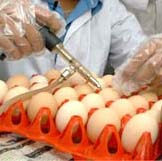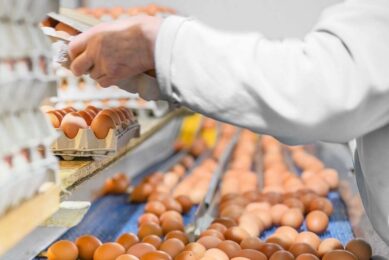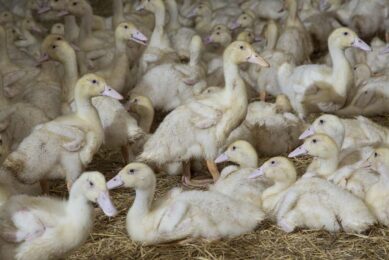First in ovo vaccine against avian influenza

The world’s first in ovo, or egg-injected, vaccine to protect chickens against avian influenza has been developed.
The vaccine was developedby an Auburn University veterinary professor in collaboration with researchers at Vaxin of Birmingham.
The research, which has been published in the scientific journal Vaccine, would provide 100 percent protection once an outbreak’s strain is determined.
“We have proven the principle, which is the major step in leading to commercially produced vaccine that could be vital to the poultry industry,” said Haroldo Toro, the Auburn University professor.
“When an outbreak occurs, we would determine the strain and quickly create a vaccine within three months specifically for it.”
The researchers inserted a gene from a low pathogenic avian flu virus strain (H5N9) into a non-replicating human virus which was then injected into developing chicken embryos still in the egg.
When protection induced by the vaccine was tested against two highly pathogenic avian flu viruses, a Vietnam H5N1 strain and a Mexican H5N2 strain, the results showed 68 percent and 100 percent protection, respectively.
“These strains have slightly different genetic makeups which account for the different percentages in protection,” said Toro, who is also collaborating on this project with the Southeast Poultry Research Laboratory.
“Our results indicate that we can provide effective protection against any strain after incorporating the gene of the field strain into our vaccine construct.”
In the case of an outbreak of avian influenza, mass vaccination programmes around the perimeter region would help to reduce the risk of further dissemination of the field virus to neighboring areas.
“We can vaccinate lots of birds in a quick, cost- and labor-saving manner which otherwise would not be possible,” Toro said. “Most poultry operations already have automated injection machines to vaccinate against Marek’s disease, injecting up to 40,000 eggs per minute. Our vaccine is produced through cell cultures, so we can easily make enough vaccine for thousands of birds.”
Toro’s research is funded through a USDA programme set up in 2004 for universities to study avian influenza. The next step is gaining federal approval to commercially produce the vaccine.
“We are looking at two or three years for federal approval, but it might be much sooner if an outbreak occurs,” he said. “We have a very good tool against avian flu. No one has done this before.”
Join 31,000+ subscribers
Subscribe to our newsletter to stay updated about all the need-to-know content in the poultry sector, three times a week. Beheer
Beheer








 WP Admin
WP Admin  Bewerk bericht
Bewerk bericht